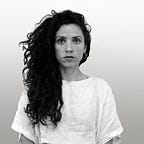Classrooms After Crisis
Imagine trying to learn to read when you don’t speak the same language as your teacher — or even half of your classmates. That’s the situation in Diffa, a town in southeastern Niger. Now imagine being a student in a classroom with no desks, seated next to 230 other students, all facing just one teacher. That’s the Burundian side of the Nyaranguysu Refugee camp in western Tanzania. These are starkly different classrooms, but they are united by one stubborn belief: that classrooms must be the only way for kids to learn.
You may have read about Niger recently. Niger has one of the lowest literacy rates and highest birth rates in the world, and only about 29% of girls make it to school. Niger is a mostly Muslim country tormented by Boko Haram, especially in the areas where the IRC works. These towns are war zones with curfews and strict limitations on vehicle use. Wearing a backpack and walking miles to school turns kids into targets for the radicals but, in a treacherous Catch-22, illiteracy and poverty have been shown to contribute seriously to radicalization. Schools are targeted but so are uneducated young boys and girls. It is an impossible choice. And if parents do take the risk and send their kids to school, the majority of students end up in classrooms taught by underqualified, underpaid and inexperienced teachers — who nevertheless risk their lives to be there.
Tanzania is the host country for the fifth largest refugee camp in the world. In recent years, a quarter of a million Burundians have fled their own country and made their way to Tanzania. Unlike in Niger, these refugees are trapped in a camp. There are few ways to make money and they have even fewer choices when it comes to where they live or even what they eat. One Congolese child we met said, “It is difficult to say who is successful in this environment because we are all refugees and we rely on UNHCR and we rely on help. I have dreams but I can’t get there.” The future seems to be out of their control; despite this, students and families invest in education. In many ways, it is their one hope. 96% of kids attend camp schools strained from a lack of resources. Teachers are unqualified, culled from a population of fleeing refugees, classrooms have no textbooks and no desks, and students receive only a single small notebook and pen for the semester.
Yet, in both Niger and Tanzania we saw how people created communities of learning and support for themselves. In Niger, teachers continued to tutor kids in their own homes long after funding for a similar program had ended. Parents spent time telling their kids to be courageous, comforting them not to cry, and convincing other parents to take the risk and send their kids to school. At Nyaranguysu, we saw teachers who supported each other informally, meeting in empty classrooms on Saturday, and we heard from students about how they learn from films, their peers, family and neighbors.
We asked ourselves why we were focusing on classrooms if learning was happening everywhere. And we asked ourselves why we were limiting ourselves to traditional teachers, if students were learning from lots of different people. We want classrooms to be right and we have spent decades investing in them, but after looking closely at the different needs, challenges and solutions created by the communities, we know they can’t be the only answer.
This project was funded with support from the U.K. Department for International Development (DFID).
